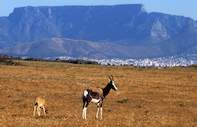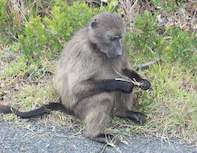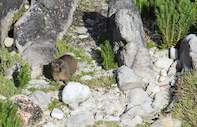Ecological Factors

An important limiting ecological factor in the Western Cape region is the poor nutrient status of the soils and natural vegetation. For animal life, this means that the plants grow slowly and have limited food value. Consequently, the area has little in the way of fauna. It is true that, at the time when white settlers first landed at the Cape: lions, leopards, elephants, buffalos and hippos were to be found right where the city of Cape Town now rises, but their numbers could never have been significant, as the fynbos food chain cannot, and never could, support a large biomass.
Cape Mammals

Although birds are the most likely fauna to be seen in the Western Cape region, there are numerous animals roaming the valleys and mountain ranges of the area. Baboons are conspicuous and noisy - but they hardly need to be described. While on the Swellendam frail I reread Eugene Marais' classic work The Soul of the Ape and renews the awe of the man and the appreciation of our primate relatives. Leopards are more frequent than many would think, but very few get close.
You’ll be lucky to sight a fresh spoor, or hearing one cough very nearby at dusk. Other common animals are the small antelope such as klipspringer, grysbok, steenbok and duiker as well as the medium-sized grey rhebok. Lynx are common and a problem to stock farmers; brown hyena are less so but nevertheless persecuted wherever they are found.
Little Creatures

Aardvarks and porcupines (a rodent species) are nocturnal hole diggers, and seldom seen, while, in contrast, the endearing dassies are seen everywhere. Mongooses, genets, striped polecats and hares are also widespread, but seldom common. In the wetter eastern areas, calcified droppings often show the presence of clawless otters, though I have yet to hear of a sighting in these mountains.